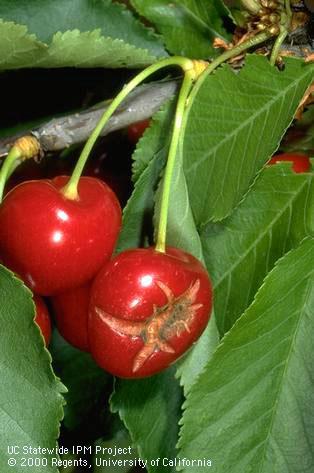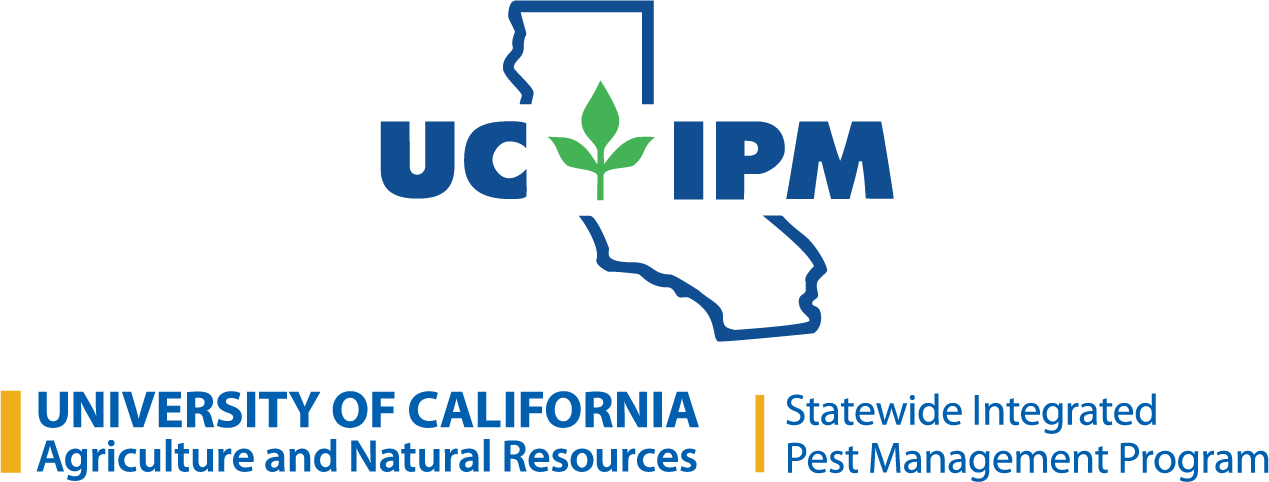Cherry fruit cracking in California occurs mostly when rain wets ripe or almost ripe fruit on the trees.
Disorder Development
Cherry fruit crack for two reasons. 1) There is free-standing water on the surface of ripening fruit, which is generally due to rain. Because ripening fruit have a high sugar content, when their surface is wet, water moves inside the fruit. 2) Due to a water imbalance in the soil-tree system, generally when there is excessive irrigation or rain that makes prolonged soggy soil. When soils are saturated, if roots are healthy excessive water moves into the tree and some of this excess water moves into the fruit.
Damage
Cherries with cracked skin can be less appetizing than healthy fruit. Once fruit crack, the exposed flesh becomes highly susceptible to fungal growth and decay.
Some rootstock and scion cultivars are more or less susceptible to cracking than others. For example, the most popular variety Bing is highly susceptible to fruit cracking.

Solutions
Provide trees with a good growing conditions and proper cultural care so they grow vigorously. This results in a dense tree canopy with abundant leaves that can shelter fruit from becoming wetted by rain. To encourage vigorous growth and avoid soggy soils, appropriate irrigation is especially important.
Ensure that any sprinkler water is not wetting the tree canopy. If significant rain is predicted, consider harvesting at least some of the crop early. When rain does occur and fruit surfaces are wetted, promptly harvest any fruit on the tree to reduce the amount that cracks. Consider toweling off or otherwise drying the fruit surface. Promptly chill the fruit to reduce the extent to which any cracked fruit develop decay.
References
Adapted from Understanding and Preventing Sweet Cherry Fruit Cracking, Oregon State University.
